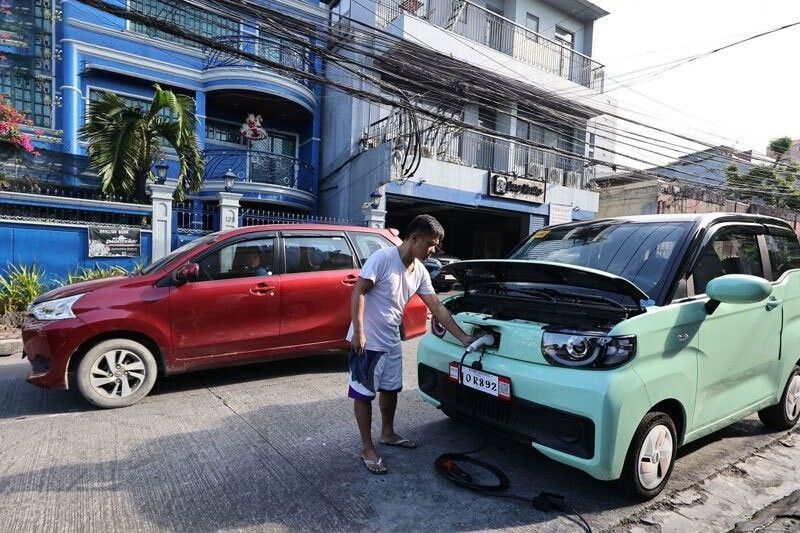DTI cool on tax breaks for hybrid vehicles
Louella Desiderio – The Philippine Star March 12, 2024 | 12:00am A driver from Quezon City cleans the electric car of his boss on November 27, 2023. STAR / Michael Varcas MANILA, Philippines — The Department of Trade and Industry (DTI) said the inclusion of hybrid vehicles in the coverage of electric vehicles (EVs) enjoying […]


Louella Desiderio – The Philippine Star
March 12, 2024 | 12:00am
A driver from Quezon City cleans the electric car of his boss on November 27, 2023.
STAR / Michael Varcas
MANILA, Philippines — The Department of Trade and Industry (DTI) said the inclusion of hybrid vehicles in the coverage of electric vehicles (EVs) enjoying tax breaks under Executive Order 12 would defeat the objective behind the lowered tariffs, but is open to discussions to bring down import duties of hybrid vehicles in the review of the country’s trade agreement with Japan.
Trade Undersecretary Ceferino Rodolfo said in a press briefing the inclusion of hybrid vehicles in the coverage of EVs enjoying the temporary reduction of tariffs would defeat the primary objective for the lowering of duties.
“The reason we pushed for removal of tariffs for EVs is to develop infrastructure. Hybrid [vehicles] do not need infrastructure,” he said.
Unlike full EVs that need charging stations, hybrid vehicles do not require charging the battery separately from running the vehicle. Hybrid vehicles are powered by an internal combustion engine (ICE), with electric motors that use energy stored in batteries.
“The objective [of the reduced tariffs for EVs] is to encourage the setting up of charging stations so we will have infrastructure to support our transition to EVs,” Trade Secretary Alfredo Pascual said.
By having the infrastructure and building market demand for EVs, Rodolfo said the country would be able to encourage EV assembly in the country.
When it comes to the supply chain for ICE vehicles, he said the country is quite far behind.
“So we would like to already focus on the EVs,” he said.
The government is looking to expand the coverage of EVs that enjoy lowered tariffs to include hybrid vehicles and e-motorcycles under EO 12.
A review is being undertaken by the National Economic and Development Authority on EO 12, which took effect in February last year and temporarily reduced tariffs for certain EVs and parts and components to zero from the previous five to 30 percent for a period of five years.
While the DTI does not support the inclusion of hybrid vehicles in the list of vehicles enjoying tax breaks under EO 12, Rodolfo said the government is open to discussing the matter in the review of the Philippines’ bilateral trade agreement with Japan.
“We are open to discussing this in the context of a Philippines-Japan negotiation for the general review of the Philippines-Japan EPA (economic partnership agreement),” Rodolfo said.
Japan is producing hybrid electric vehicles.
The PJEPA, which entered into force in 2008, covers trade in goods, trade in services, investments, movement of natural persons, intellectual property, government procurement, competition and improvement of business environment among others.














